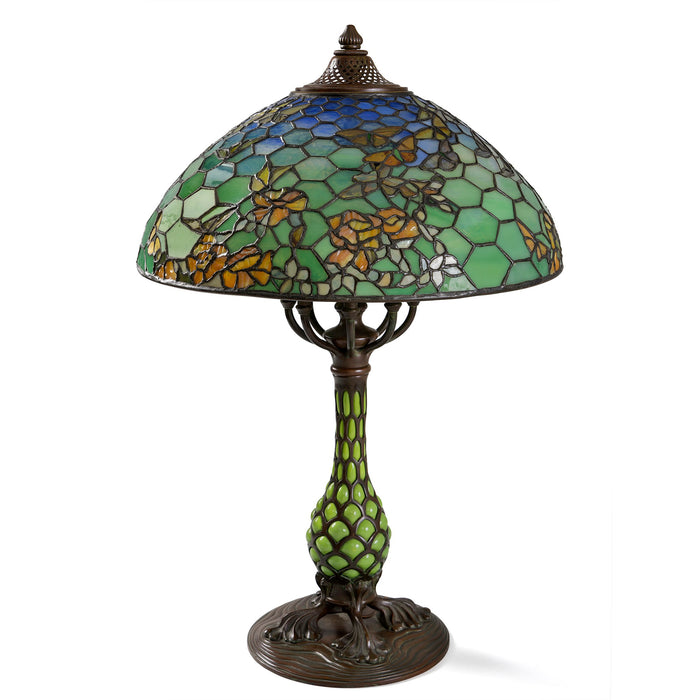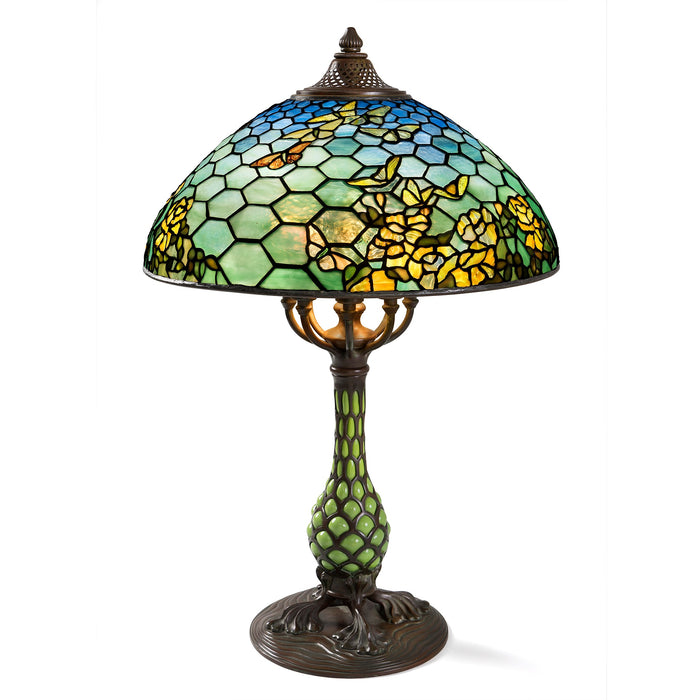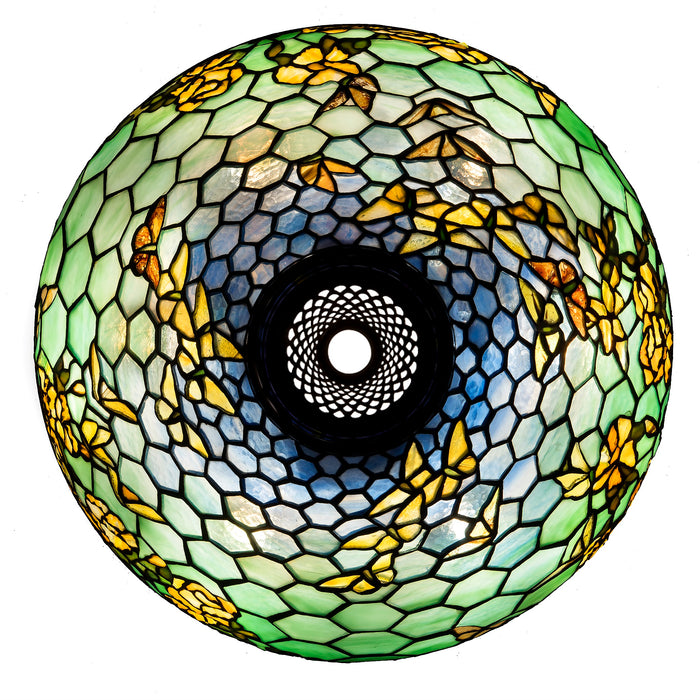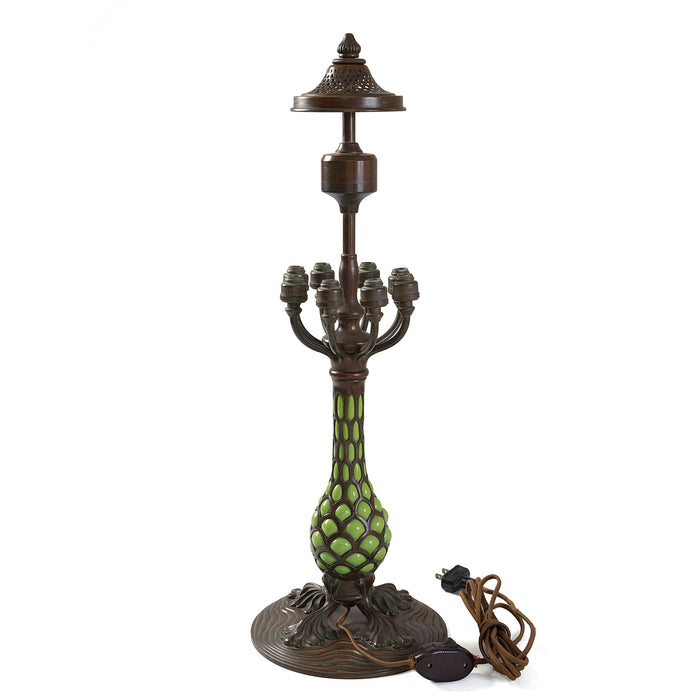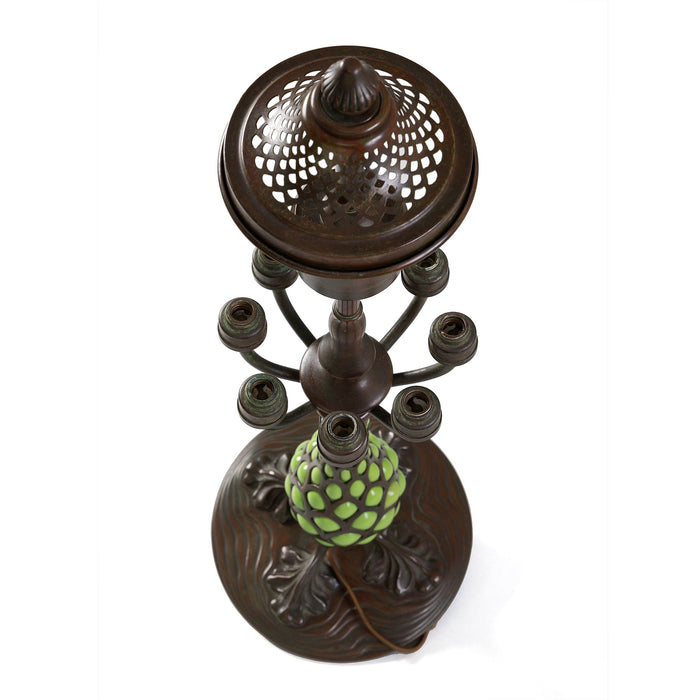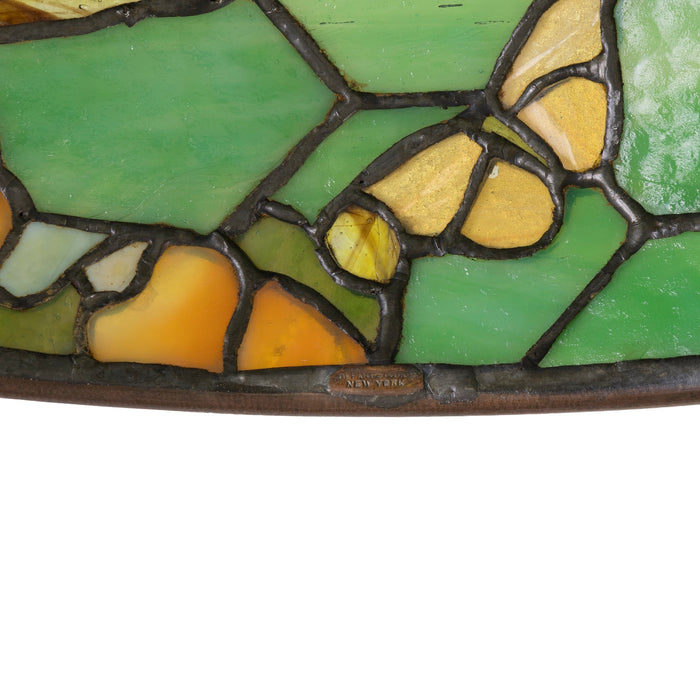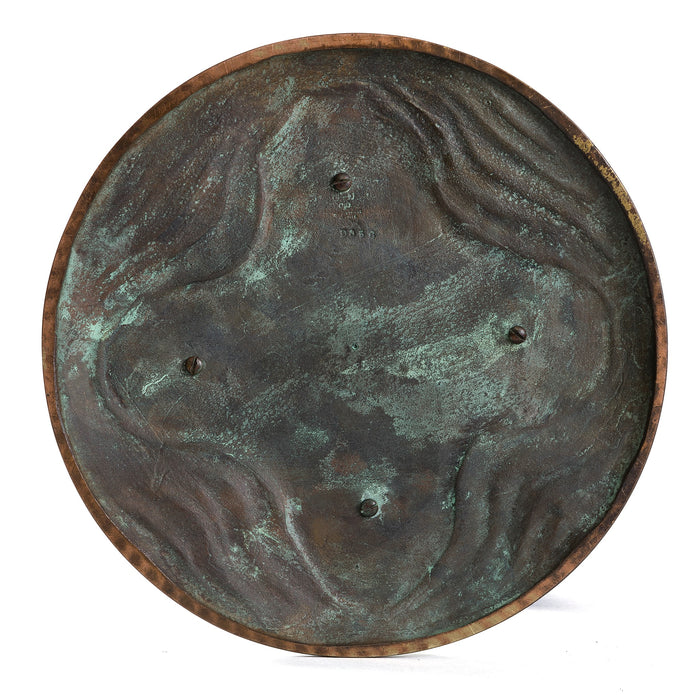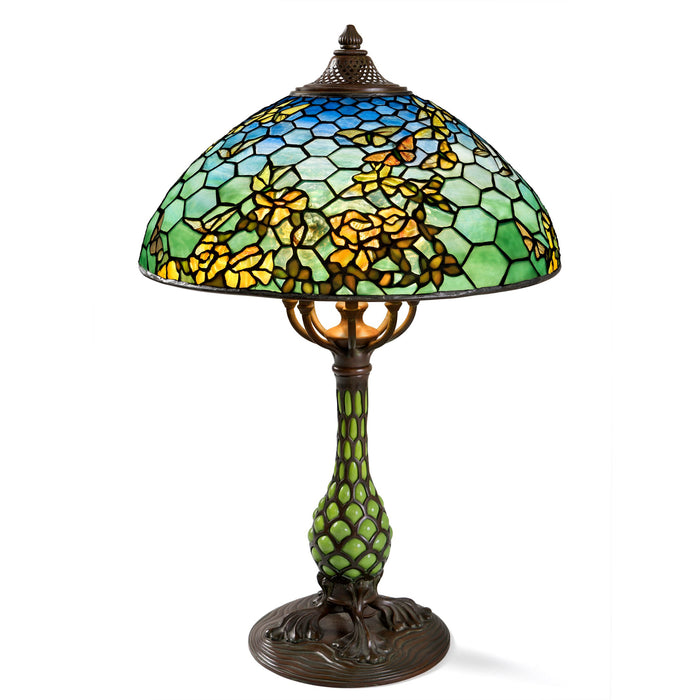
Tiffany Studios New York "Butterfly & Yellow Rose" Table Lamp
The Butterfly and Yellow Rose Lamp from Tiffany Studios portrays a captivating scene where amber butterflies gracefully float above a bed of yellow roses against a honeycomb background that gradates from a blue sky to a verdant meadow. The design inspiration stems from Louis Comfort Tiffany's first business partner, Candace Wheeler. Back in 1881, Wheeler crafted a wallpaper titled "Bees with Honeycomb," featuring a colony of bees hovering over white clover set against a honeycomb backdrop. This intricate imagery served as the basis for the geometrically simplified design of the lamp.
Notably, Tiffany, renowned for his artistic flair, established a circular rose garden on the upper terrace of his inaugural estate. This garden was adorned with yellow roses, a botanical choice inspired by the preferences of Chaucer and Shakespeare. In Renaissance symbolism, the yellow rose came to represent inner beauty, noted for its fragrance in both life and death.
- Product Details
- Curator's Notes
Item #: L-21406
Artist: Tiffany Studios New York
Country: United States
Circa: 1902
Dimensions: 16" diameter, 24.25" height
Materials: Leaded Glass, Bronze
Shade Signed: Tiffany Studios New York
Base Signed: Tiffany Studios New York D856 with Tiffany Glass and Decorating Company monogram
Literature: A. Duncan, Tiffany Lamps and Metalware, Woodbridge, Suffolk, 2019, pp. 73, no. 267-268 (base model); 162, no. 659 (shade model); 182, no. 731 (base model); 194, no. 763 (base model)
This butterfly sits upon a pineapple base, which was the culmination of years of experimentation. Starting in 1898, Tiffany began a series of reticulated glass fuel lamps based upon Palloncino Venezianas (Venetian balloons). To create these vessels, seventeenth-century Murano artisans would blow glass through wirework cages. While colloquially called the “pineapple”, Tiffany’s glass base was in fact modeled after the pomegranate. During the renaissance, pomegranate textiles proliferated from the caliphate of Süleyman the Magnificent (1520-66) to the dresses of Venetian court ladies.
The sumptuous Italian gold-brocaded red velvets with the pomegranate motif, “zetani vel lutati al lucciolati” as recorded in contemporary documents. were an indication of high social status: luxury, power. and sacredness. Between Tiffany’s glass technique and chosen motif, Tiffany’s blown glass base is a stunning ode to Venice.

